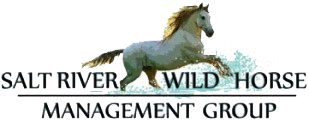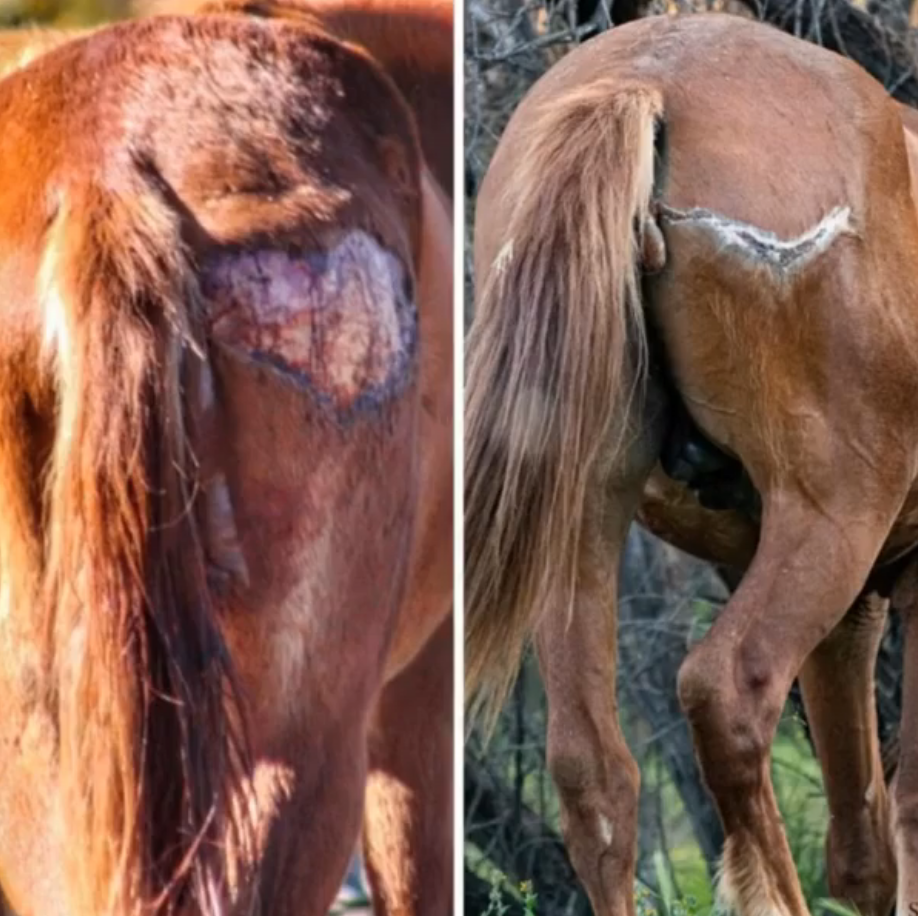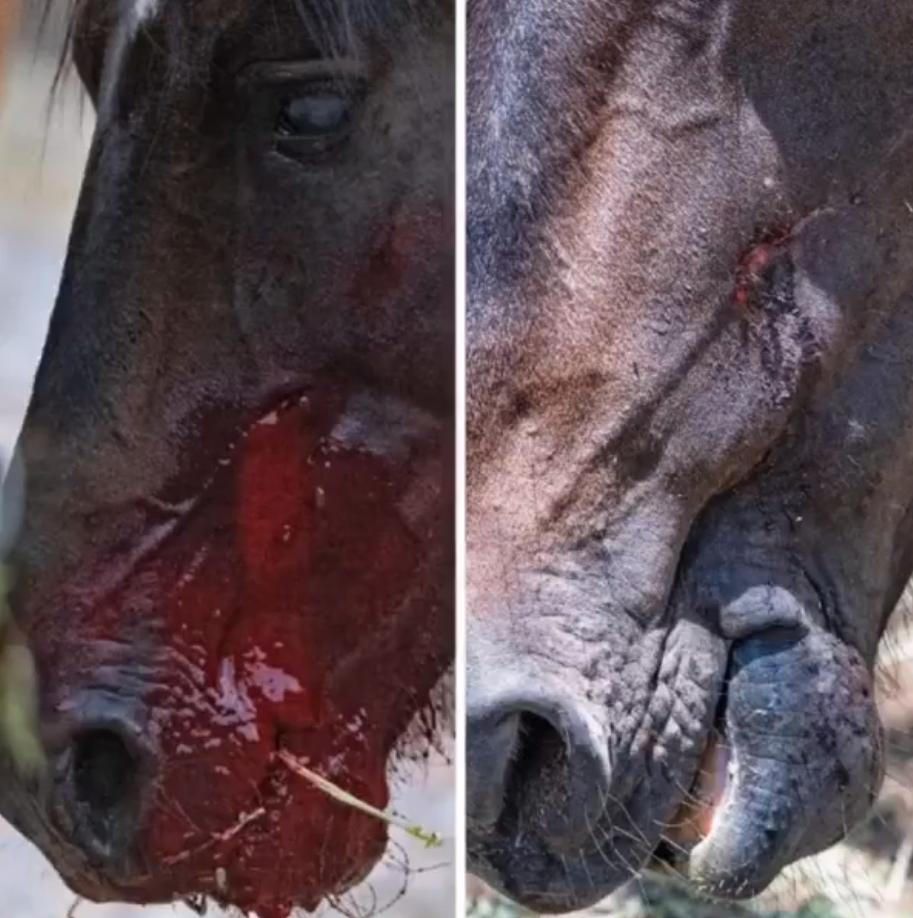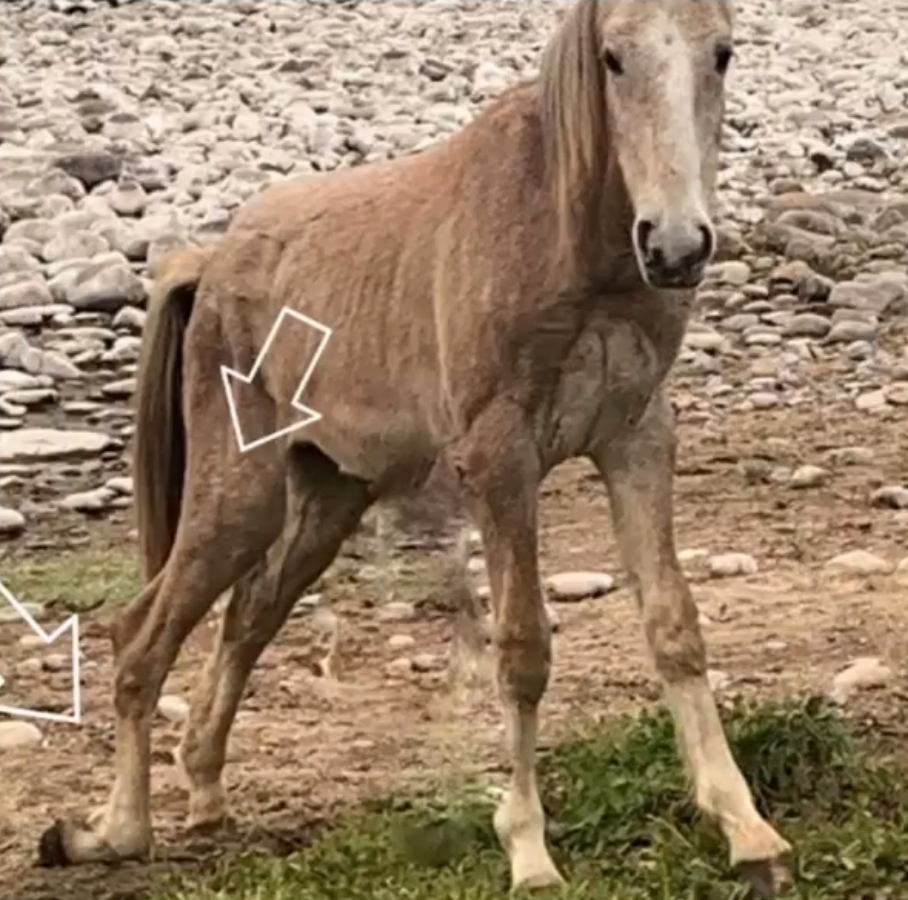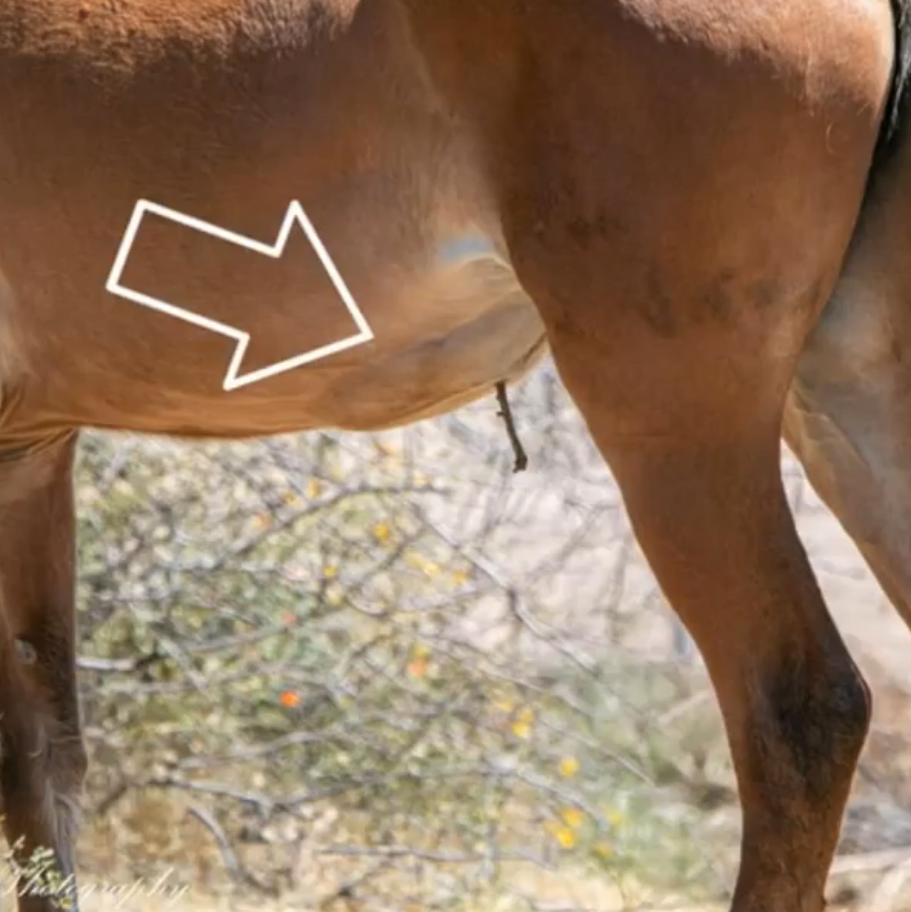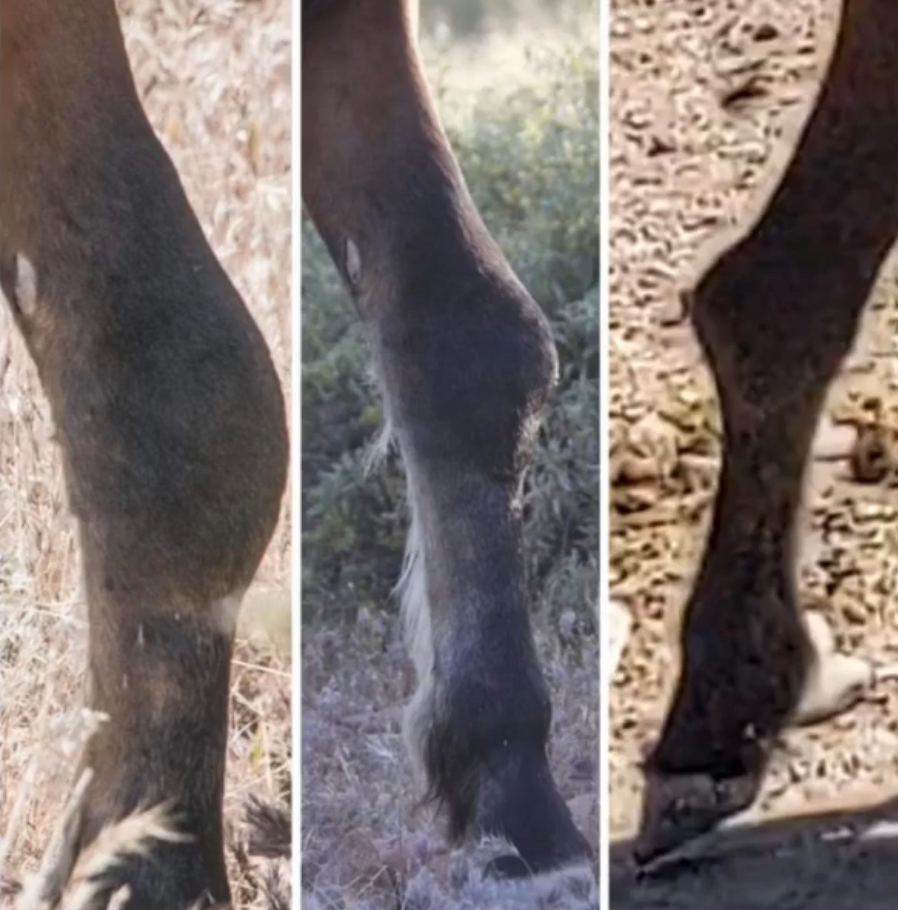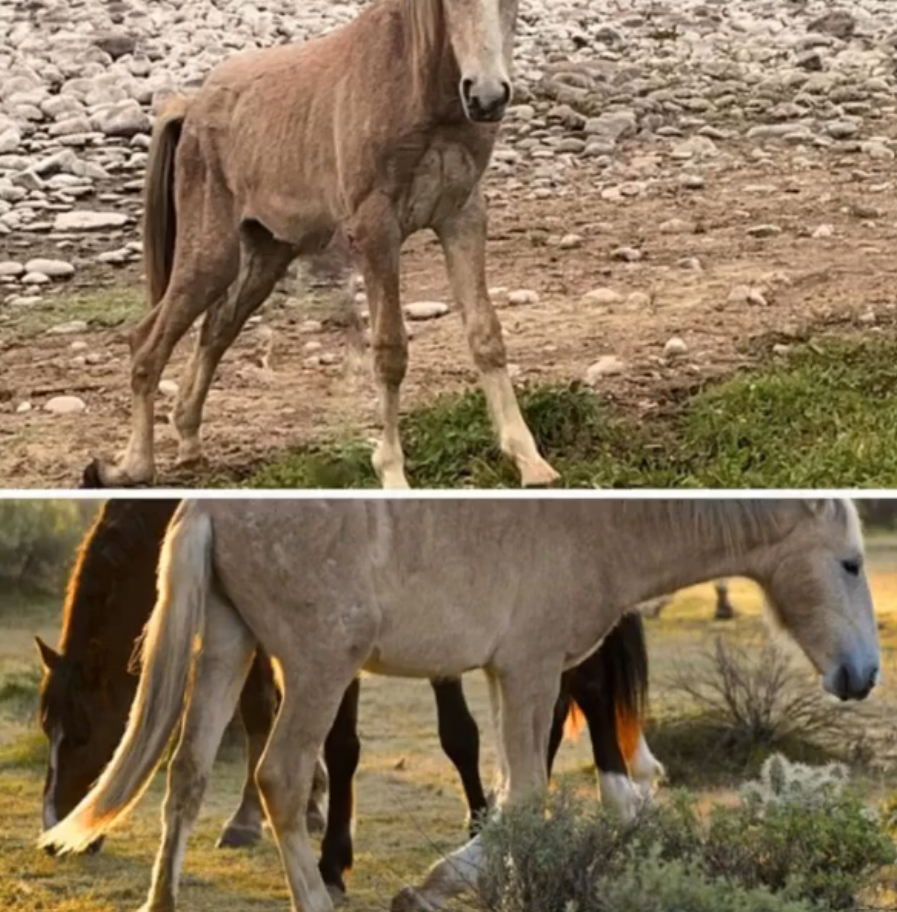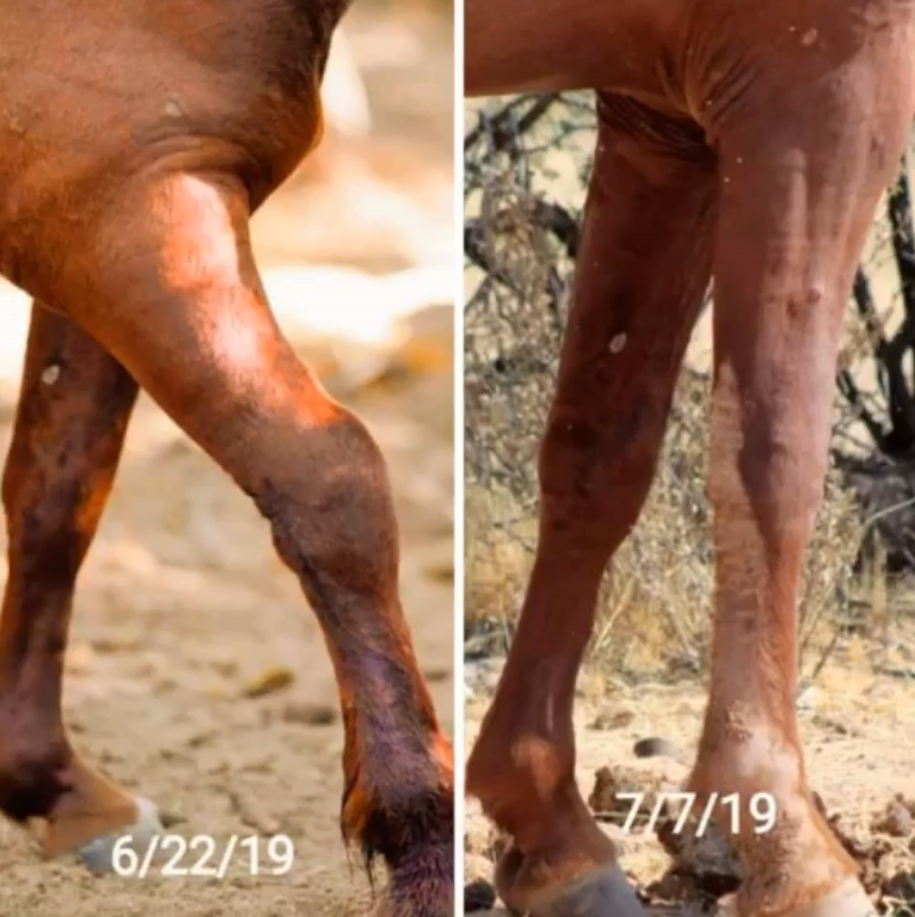
SRWHMG gallery: healing in wild horses.
Images may be disturbing to some. All horses in gallery have recovered 100%.
Our contract with the AZDA for the humane management of the Salt River wild horses, includes the monitoring of wild horses with injuries. In any herd of wild animals there is a natural injury and death rate, which is much higher than commonly known.
Because these horses live among thousands of visitors to the TNF, you cannot just let horses suffer and die a bad death, because that would upset a lot of people and besides, we would not want to.
We assess each injury case on an individual basis, carefully, and over time. When we observe a serious injury, sometimes, it is only time that will tell if the horse is going to heal or not.
We document each case, report it to AZDA, and then our volunteers will watch the injury and document the progression of it. We stay 50 ft away from the horse and are not constantly following it around, but rather note the progression every couple of days, because what an injured wild horse needs most is rest. For that reason we do not always post in real time when there is a serious injury.
Of course we cannot forget that we are dealing with wild horses. Nature does not always look perfect. Everyone can understand that we cannot clean up wounds, bandage them, or provide antibiotics.
At the worst point of illness or injury in a wild horse, things can look pretty graphic sometimes and the situation may seem hopeless.
But over the many years of management (both in an official and unofficial capacity), the amount of healing we have seen is truly remarkable, to the point of “miraculous”. Because of these experiences, we have gained a high confidence in the capacity for healing in wild horses.
Their toughness originates with the principle of survival of the fittest. For many centuries, only the DNA of real survivors has contributed to this herd, without the help of mankind. If a wild horse cannot beat his/her infection, well then it dies. But the horse that beats the infection, gets to contribute its DNA for many years thereafter to the herd. So with each generation the herd gets stronger. This principle repeated generation after generation for centuries, results in some incredibly tough horses.
Some people will say, well if you manage them they are not wild anymore. However, they are as wild as ever because with our humane management protocols, this principal did not change. We do not take sick horses off the river to fix them and release them back to the herd. Every horse that we have rescued is no longer in the herd, which results in the same effect on the herd genetics as if they had died.
The rescued orphaned foals, and fatally injured horses, get a happy life with a family band, close to what they had in the wild.
You, the public, are a large part of making humane management principles work. You contribute when we are in need and also you sponsor any of our rescues, on srwhmg.org so that they may live happily ever after.
Humane management does mean making hard decisions sometimes. It means working with and sometimes against nature, but it also means giving nature a chance. It is about finding the balance.
We don’t criticize the imperfectness of nature, but most of all, we never underestimate the power of it.
All horses in the below gallery have 100% recovered.
Respectfully, SRWHMG.
